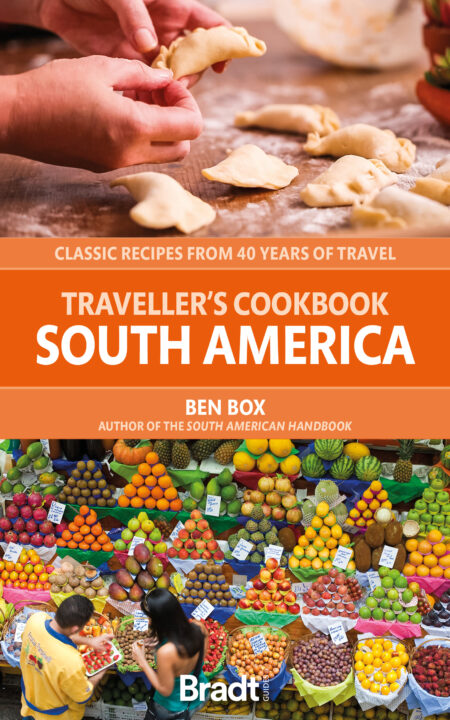At every bus stop in the eastern half of Paraguay, vendedores ambulantes dash on board selling mobile phones, newspapers, sunglasses, knick-knacks and, above all, chipas, a cheese bread with a faint aniseed taste made by local chipería bakeries, delicious warm with a very tempting aroma.
In South America, there are several versions of this simple, snack-worthy idea: Brazilian pão de queijo, for example, Bolivian cuñapé, and, from Colombia, Ecuador and Peru, pan de yuca, pan de queso and pan de bono, all made with cassava flour or tapioca flour/starch, filled with cheese, crisp on the outside and gooey in the middle.
Paraguayan chipa (sometimes chipá) takes the cheese bread idea to a whole new level. Before the arrival of the Spanish colonists, chipa was made of cassava starch and water, pressed around a stick and cooked on an open fire. The Spaniards were disdainful of cassava (like other indigenous foods, they believed it to be dangerous), so they began to introduce their preferred ingredients, such as meat, dairy produce and eggs, to make the chipa more to their taste. The Guaraní name (chipa means ‘bread’ or ‘cake’) prevailed, however, and now there are dozens of types of chipa (some say as many as 70) traditionally cooked in atatakua (a big clay oven).
A form of the original chipa on a stick is still made, called chipa chapuré, mbocá or asador. Among the most common varieties are chipa almidón, chipa mestizo, or avati, which uses a mixture of cassava and cornflour (and which can be made into a ring called argolla).
Ingredients
* Makes 16
- 110g/4oz butter
- 4 small to medium eggs
- 200g/7oz grated cheese (we used 165g/6oz queso fresco made up to 200g/7oz with 35g/1oz grated Parmesan)
- 1 teaspoon aniseed
- ½ teaspoon salt
- 100ml/3½ fl oz milk (any type)
- 450g/1lb cassava flour, sieved (note the flours derived from cassava and corn are gluten-free)
Method
- If possible, make sure that all the ingredients are the same temperature.
- Soften the butter a little and lightly beat the eggs. Put both in the bowl of a stand mixer and mix together for a few minutes (there will be small lumps of butter in the egg mixture). If you do not have a stand mixer, all mixing can be done by hand.
- Add the cheese and the aniseed and continue to mix until all the ingredients are combined (but still not a smooth mixture).
- Dissolve the salt in the milk. Add the milk to the bowl, then introduce the cassava flour a little at a time while mixing. Keep going until the dough is homogenous.
- Divide the dough into four equal parts, then divide each of those into four more parts to make 16 pieces of dough, which can be shaped roughly into balls. Put them on a tray, cover and put into the refrigerator for 20 minutes.
- Take the dough balls out of the fridge and, with your hands, roll each one into a cylinder about 15cm/6in long and 1.5cm/½ in in diameter. Either leave as sticks, or bring the ends of the stick round in a circle and press together to make a ring. This process will take about 15 minutes, so 5 minutes after starting, preheat your oven to 220°C/425°F/gas mark 7.
- Place the sticks/rings on to an ovenproof tray lined with baking parchment. Leave a bit of space between each chipa.
- Bake for 20 minutes until the outside is golden. The inside should be gooey.
- Leave to cool for a few minutes on a rack and eat as soon as you can. They are best straight out of the oven, but you can reheat them in a microwave or in a toaster.
More information
For more South American recipes, check out Ben Box’s book:
